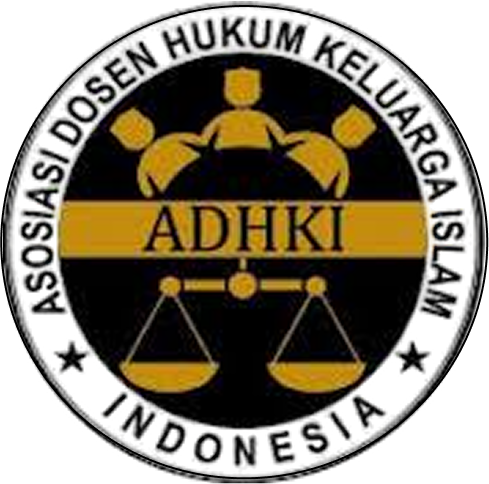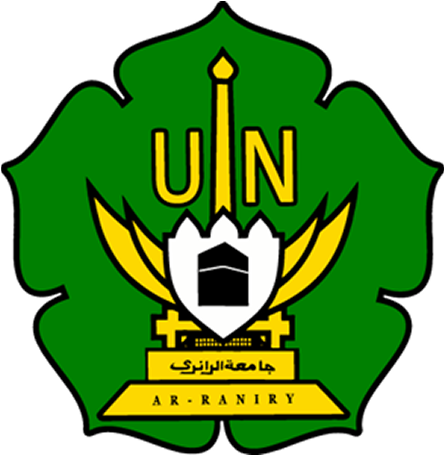Family Harmony and Quality of Life
A Personal Relationship Approach of Gabriel Marcel in the Age of Social Media Networks
DOI:
https://doi.org/10.22373/epnem321Keywords:
Harmony, Household, Social Media, Divorce, Human RelationshipsAbstract
Social media represents one of the most widely utilised platforms across the globe. This medium provides numerous conveniences for individuals to interact with one another, whether in close proximity or at a distance, among acquaintances and strangers alike. However, these conveniences do not invariably yield positive outcomes; rather, they can also entail significant disadvantages. A pressing concern is that a considerable number of cases of marital discord in Indonesia can be attributed to infidelity facilitated by social media. This study aims to assess the impact of social media usage on the quality of life and marital harmony among families in Semarang. The methodology employed in this research is quantitative, with the subjects comprising married couples residing in Semarang. Data collection was performed via a survey, utilising questionnaires administered to 131 respondents in the area. Data analysis was conducted through validity tests, reliability tests, and regression analysis employing SEM PLS software. The data was subsequently examined through the framework of Gabriel Marcel's philosophy of humanity. Marcel's philosophy is pivotal in reinstating fundamental values that define human relationships, thereby ensuring that marital connections are not merely mechanical and technocratic. This study demonstrates a significant influence of social media usage on marital harmony among families in Semarang. Consequently, collaboration among various stakeholders is essential to raise awareness regarding the paradoxes associated with social media usage. Furthermore, it is imperative to enhance couples’ understanding of the purpose of marriage and how spouses can adapt to technological advancements to ensure that family resilience remains robust. This study is positioned at a technology readiness level (TRL) of 3, involving the development of a conceptual model aimed at improving marital harmony.
References
Journals and Books
Abitolkha, Amir Maliki, and Limas Dodi. “Socio-Sufistic Trends of Marriage in Creating Harmony in the Postmodern Society of Kampung Arab, Madura: A Perspective on the Theory of Utilitarianism.” Samarah: Jurnal Hukum Keluarga Dan Hukum Islam 7, no. 2 (May 9, 2023): 687. https://doi.org/10.22373/sjhk.v7i2.17281.
Aledo, Belén Blesa. “The Personal Identity in Gabriel Marcel and His Sociological Proyection.” Pensamiento 68, no. 257 (2012): 427 – 443.
Amri, M. Saeful. “Mitsaqan Ghalidza Di Era Disrupsi (Studi Perceraian Sebab Media Sosial).” Ulul Albab: Jurnal Studi Dan Penelitian Hukum Islam 3, no. 1 (January 12, 2020): 89. https://doi.org/10.30659/jua.v3i1.7496.
Annur, Cindy Mutia. “Ada 185 Juta Pengguna Internet Di Indonesia Pada Januari 2024,” 2024. https://databoks.katadata.co.id/datapublish/2024/02/27/ada-185-juta-pengguna-internet-di-indonesia-pada-januari-2024.
Ardi, Mohammad Noviani, Heri Santoso, Muchamad Coirun Nizar, and Tali Tulab. “Actualization of Pancasila Philosophy in the Context of Family Social Resilience in Jalawastu Traditional Village, Brebes Regency, Central Java, Indonesia.” El-Usrah: Jurnal Hukum Keluarga 7, no. 2 (December 31, 2024): 557. https://doi.org/10.22373/ujhk.v7i2.25746.
Ardi, Mohammad Noviani, Tali Tulab, Dina Yustisi Yurista, and Aliyatus Sariroh. “Determinants of Family Resilience in Female-Headed Families on the North Coast of Java.” Jurnal Ilmiah Al-Syir’ah 20, no. 2 (December 20, 2022): 237. https://doi.org/10.30984/jis.v20i2.1860.
Asmaya, Enung. “Implementasi Agama Dalam Mewujudkan Keluarga Sakinah.” KOMUNIKA: Jurnal Dakwah Dan Komunikasi 6, no. 1 (January 1, 2012). https://doi.org/10.24090/komunika.v6i1.341.
Bertens, K. Filsafat Barat Abad XX Jilid II Prancis. Revision. Jakarta: PT Gramdeia Pustaka Utama, 1996.
Budhiasa, Sudjana. Analisis Statistik Multivariate Dengan Aplikasi SEM PPLS Smartpls 3.2.6. Edited by Jiwa Atmaja. Pertama. Bali: Udayana University Press, 2016.
Chin, Wynne W. “The Partial Least Squares Approach to Structural Equation Modeling.” In Modern Mothods For Business Research, edited by George A. Marcoulides, 295–358. London: Lawrence Erlbaum Associates, 1998.
Eichenberg, Christiane, Jessica Huss, and Cornelia Küsel. “From Online Dating to Online Divorce: An Overview of Couple and Family Relationships Shaped Through Digital Media.” Contemporary Family Therapy 39, no. 4 (December 2, 2017): 249–60. https://doi.org/10.1007/s10591-017-9434-x.
Fauziah, Nailul, Endang Sri Indrawati, and Adi Dinardinata. “From Western to The Eastern Countries, Then to Indonesia: A Scoping Review of Family Harmony Theories and Research.” Proceedings of International Conference on Psychological Studies (ICPsyche) 4 (2023): 117–33. https://doi.org/10.58959/icpsyche.v4i1.30.
Froma, Walsh. “Family Resilience Strengths Forged through Adversity.” Normal Family Processes, no. October 2012 (2012).
Harlina, Yuni. “Dampak Komunikasi Jejaring Sosial Terhadap Kehidupan Perkawinan Dalam Islam.” Hukum Islam 15, no. 1 (2015): 83–108.
Haryono, Siswoyo. Metode SEM Untuk Penelitian Dengan AMOS LISREL PLS. Edited by Hamid Mintarja. Pertama. Bekasi: PT. Intermedia Personalia Utama, 2016.
Hussain, Tanveer, Iqra Imtiaz, and Ashraf Iqbal. “Family Relations after the Emergence of Social Media: A Comparative Analysis of Single-Family and Joint Family Systems.” Global Regional Review V, no. I (2020): 544–51. https://doi.org/10.31703/grr.2020(v-i).57.
Ismatulloh, A. M. “Konsep Sakinah, Mawaddah Dan Rahmah Dalam Al-Qur’an (Prespektif Penafsiran Kitab Al-Qur’an Dan Tafsirnya).” Jurnal Pemikiran Hukum Islam 14 (2015).
Kemp, Simon. “Digital 2024: Indonesia,” 2024. https://datareportal.com/reports/digital-2024-indonesia.
Lestari, Sri, Faturochman, Maria Goretti Adiyanti, and Bimo Walgito. “The Concept of Harmony in Javanese Society.” Anima, Indonesian Psychological Joumal 29, no. 1 (2013): 24–37. http://www.anima.ubaya.ac.id/class/openpdf.php?file=1409021145.pdf.
Maharani, Septiana Dwiputri. “Pandangan Gabriel Marcel Tentang Manusia Dalam Konteks Peristiwa Bencana Alam.” Jurnal Filsafat, 2012.
Marcel, Gabriel. “Theism and Personal Relationship” 1, no. 1 (1950): 35–42. https://www.jstor.org/stable/24455899.
Mazzone, Stefania. “Corporeality and Incarnation in Gabriel Marcel.” Archivio Di Storia Della Cultura 31 (2018): 159 – 177.
Mester, Philip. “Gabriel Marcel: Mystery of Being.” Dominicana 48, no. 2 (1963): 129–36. https://www.dominicanajournal.org/wp-content/files/old-journal-archive/vol48/no2/dominicanav48n2gabrielmarcelmysterybeing.pdf.
Nancy, Maria Nona, Yohanes Bagus Wismanto, and Lita W. Hastuti. “Hubungan Nilai Dalam Perkawinan Dan Pemaafan Dengan Keharmonisan Keluarga.” Psikodimensia 13, no. 1 (2014): 84. http://journal.unika.ac.id/index.php/psi/article/view/280.
Nizar, Muchamad Coirun. “The Religious Court’s Decisions on Divorce: A Maqāṣid Sharīʿa Perspective.” Ulumuna 24, no. 2 (January 19, 2021): 398–416. https://doi.org/10.20414/ujis.v24i2.408.
Nursyifa, Aulia. “Shifting Causes of Divorce in Indonesia Due to Social Media In Sociological Perspective.” Solid State Technology 63, no. 2s (2020).. https://www.solidstatetechnology.us/index.php/JSST/article/view/6466.
Nursyifa, Aulia, and Eti Hayati. “Upaya Pencegahan Perceraian Akibat Media Sosial Dalam Perspektif Sosiologis.” Jurnal Sosiologi Pendidikan Humanis 5, no. 2 (December 30, 2020): 144. https://doi.org/10.17977/um021v5i2p144-158.
———. “Upaya Pencegahan Perceraian Akibat Media Sosial Dalam Perspektif Sosiologis.” Jurnal Sosiologi Pendidikan Humanis 5, no. 2 (December 30, 2020): 144. https://doi.org/10.17977/um021v5i2p144-158.
Ostiz Blanco, Mikel. “The Role of Intersubjectivity on Personal Identity Formation in the Thought of Gabriel Marcel and Emmanuel Levinas.” Pensamiento. Revista de Investigación e Información Filosófica 80, no. 311 (March 6, 2025): 1615–25. https://doi.org/10.14422/pen.v80.i311.y2024.025.
Pamplume, Louis, and Beth Brombert. “Gabriel Marcel: Existence, Being, and Faith.” Yale French Studies, no. 12 (1953): 88. https://doi.org/10.2307/2929293.
Qasanah, Uswatun. “Peran Keharmonisan Keluarga Dan Konsep Diri Terhadap Perilaku Seksual Pranikah Remaja Putri.” Surakarta, 2012.
Savitri, Citra, Syifa Pramudita Faddila, Irmawartini, Hanif Rani Iswari, Choirul Anam, Silvana Syah, Sri Rochan Mulyani, et al. Statistik Multivariat Dalam Riset. Edited by Iskandar Ahmaddien. Widina. Pertama. Vol. 11. Bandung: Widina Bhakti Persada, 2014. http://webs.ucm.es/info/biomol2/Tema 01.pdf%0Ahttp://dx.doi.org/10.1016/j.addr.2009.04.004.
Sohrah, Sohrah. “Media Sosial Dan Dampaknya Terhadap Perceraian.” Al-Risalah Jurnal Ilmu Syariah Dan Hukum 19, no. 2 (March 4, 2020): 286. https://doi.org/10.24252/al-risalah.v19i2.12839.
Visser, Margreet, Catrin Finkenauer, Kim Schoemaker, Esther Kluwer, Rachel van der Rijken, Justine van Lawick, Hans Bom, J. Clasien de Schipper, and Francien Lamers-Winkelman. “I’ll Never Forgive You: High Conflict Divorce, Social Network, and Co-Parenting Conflicts.” Journal of Child and Family Studies 26, no. 11 (2017): 3055–66. https://doi.org/10.1007/s10826-017-0821-6.
Wahabi, Ayom, and Tabah Aris Nurjaman. “Gambaran Rukun Masyarakat Asli Yogyakarta.” Nusantara: Jurnal Ilmu Pengetahuan Sosial 9, no. 4 (2022): 1483–90. https://doi.org/10.31604/jips.v9i9.2022.3300-3307.
Yani, Irma. “Harmonisasi Keluarga Pasangan Suami Istri Yang Tidak Memiliki Keturunan Di Desa Bangun Jaya Kecamatan Tambusai Utara Kabupaten Rokan Hulu.” Jom Fisip 5, no. 1 (2018).
Downloads
Published
Versions
- 2025-09-14 (3)
- 2025-09-14 (2)
- 2025-09-14 (1)
Issue
Section
License
Copyright (c) 2025 Mohammad Noviani Ardi, Muchamad Coirun Nizar, Septiana Dwiputri Maharani, Gusti A.B. Menoh, and Abdul Rosyid

This work is licensed under a Creative Commons Attribution-ShareAlike 4.0 International License.
Authors who publish in Samarah: Jurnal Hukum Keluarga dan Hukum Islam agree to the following terms:
- Authors retain copyright and grant the journal right of first publication with the work simultaneously licensed Attribution-ShareAlike 4.0 International (CC BY-SA 4.0) that allows others to share the work with an acknowledgment of the work's authorship and initial publication in this journal.
- Authors are able to enter into separate, additional contractual arrangements for the non-exclusive distribution of the journal's published version of the work (e.g., post it to an institutional repository or publish it in a book), with an acknowledgment of its initial publication in this journal.
- Authors are permitted and encouraged to post their work online (e.g., in institutional repositories or on their website) prior to and during the submission process, as it can lead to productive exchanges, as well as earlier and greater citation of published work. (See The Effect of Open Acces)









